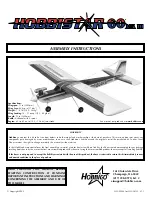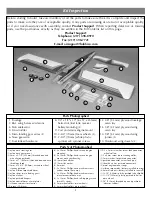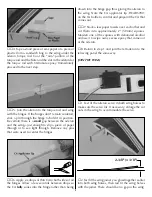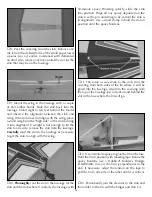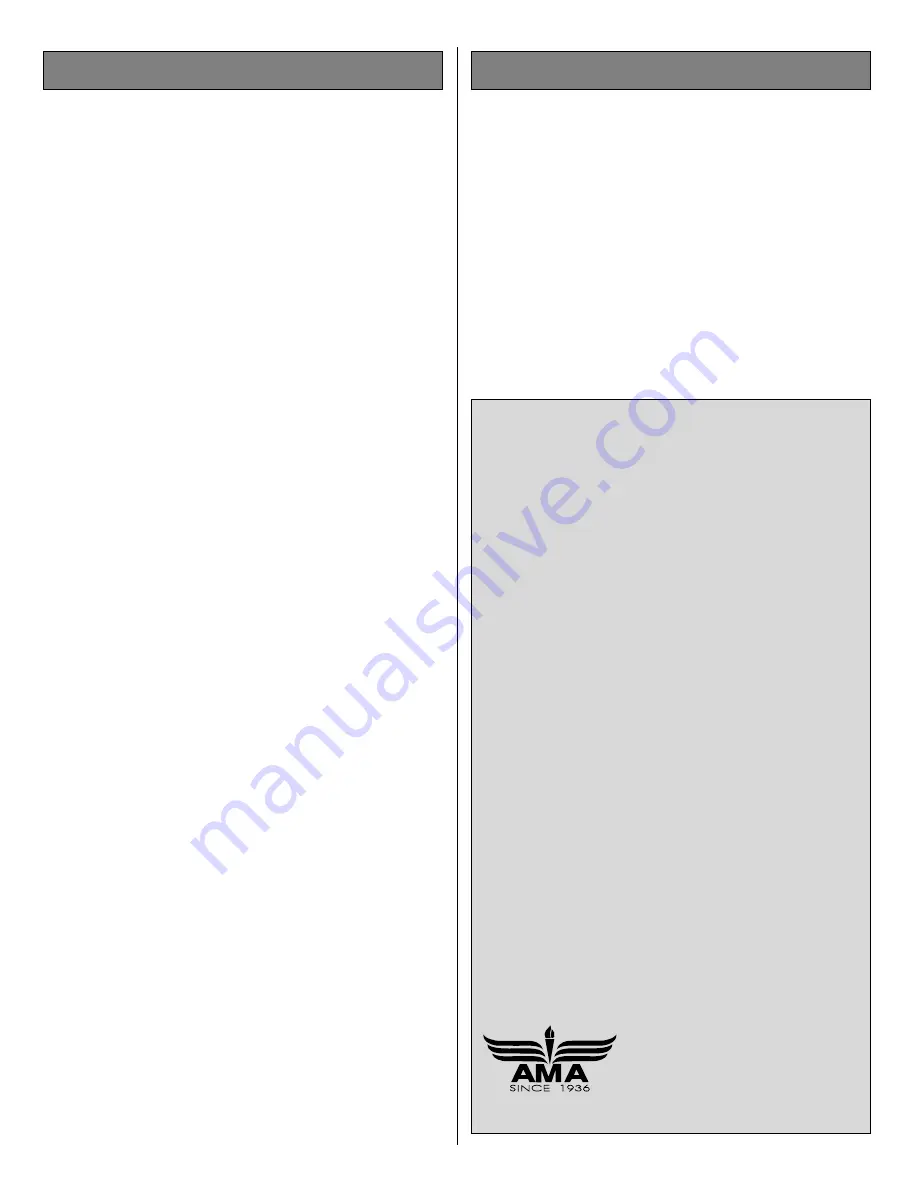
2
INTRODUCTION.................................................2
SAFETY PRECAUTIONS........................................3
ADDITIONAL ITEMS REQUIRED.........................3
Radio system ........................................................3
Engine ..................................................................3
Tools, Building Supplies, Accessories....................4
Optional Supplies and Tools .................................4
Field Equipment....................................................4
KIT INSPECTION .................................................5
ORDERING REPLACEMENT PARTS......................6
TIGHTEN THE COVERING...................................7
PREPARATIONS ...................................................7
ASSEMBLE THE WING .........................................8
Join the ailerons....................................................8
Join the wing ........................................................9
ASSEMBLE THE FUSELAGE.................................10
Mount the stabilizer and fin................................10
Mount the landing gear .....................................13
Mount the engine ...............................................14
Install the fuel tank .............................................15
Mount the aileron servo......................................15
Hook up the controls..........................................16
Mount the muffler, prop and spinner ..................19
PREPARE THE MODEL FOR FLYING ..................20
Balance the model (C.G.) ...................................20
Center the servos ................................................21
Check the control directions...............................22
Center the control surfaces .................................22
Adjust the throttle ...............................................23
Set the control throws.........................................23
Identify your model ............................................24
Balance Propellers ..............................................24
Checklist.............................................................25
Charge the batteries............................................25
Gather your tools................................................25
FLIGHT PREPARATION......................................25
Check the controls..............................................25
Range check .......................................................26
Ground check.....................................................26
ENGINE SAFETY PRECAUTIONS .......................26
AMA SAFETY CODE...........................................27
FLYING...............................................................27
Taxiing ..................................................Back Cover
Takeoff ..................................................Back Cover
Flight.....................................................Back Cover
Landing.................................................Back Cover
MAINTENANCE TIPS............................Back Cover
Congratulations and thank you for purchasing the
Hobbico Hobbistar .60 MKIII. You've made the right
decision by purchasing a “real” model airplane that
uses a .60-size engine and a 4-channel radio. Once
assembled and set up, there will be no fiddling with a
temperamental engine or constant troubleshooting to
figure out how to get the model to fly. Under the
guidance of a flight instructor, all you'll have to do is
concentrate on learning to fly. And after you've
mastered the Hobbistar, the engine and radio may be
installed in your next model!
IMPORTANT:
The
best
thing you can do to insure success is to
find a flight instructor
who will inspect your
model for airworthiness and provide flying
lessons. It cannot be stated
strongly
enough that,
if you do not already know how to fly an R/C
airplane, you will probably
not
be able to fly this
model by yourself. It may appear to be easy, but
over-controlling and disorientation quickly
overcome inexperienced fliers swiftly ending their
first flight. If you haven't yet done so,
contact the
local hobby shop and ask them to introduce you
to an instructor or an R/C club representative
. If
there is no club or experienced R/C pilot nearby,
it would be worth even a long drive to find one-if
only for just a few flight lessons (then you'll have
an idea of what to expect).
If there is no hobby shop in your area, contact the
AMA (Academy of Model Aeronautics), the
governing body of model aeronautics. The AMA
can direct you to the closest R/C club whose
membership should have qualified flight
instructors. With the added benefit of insurance
coverage provided by the AMA, most clubs
require AMA membership to fly at their field.
Academy of Model Aeronautics
5151 East Memorial Drive
Muncie, IN 47302-9252
Tele. (800) 435-9262
Fax (765) 741-0057
Or via the Internet at: http://www.modelaircraft.org
Introduction
Table of Contents

